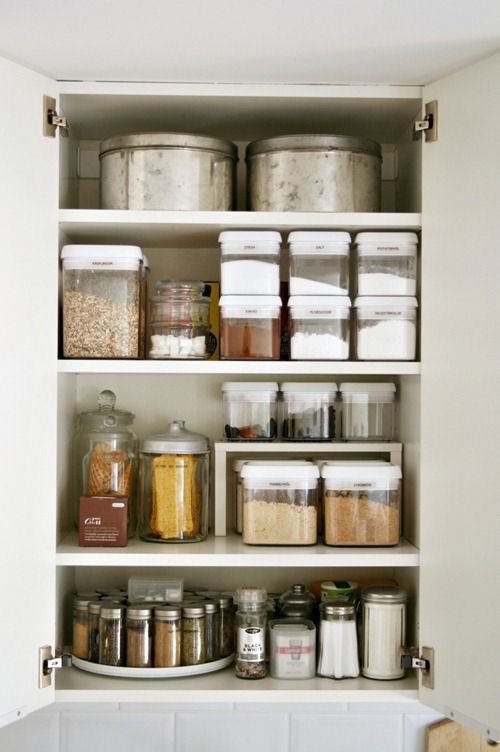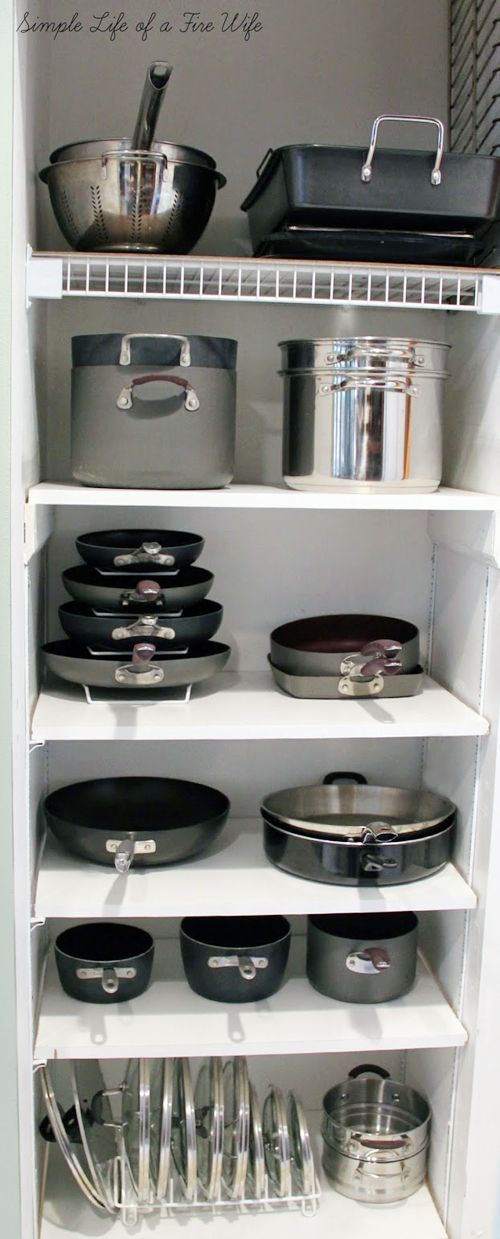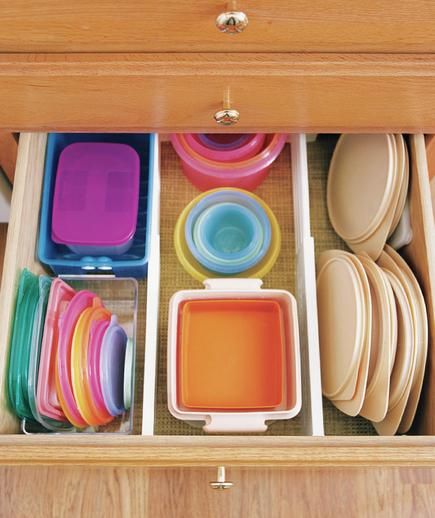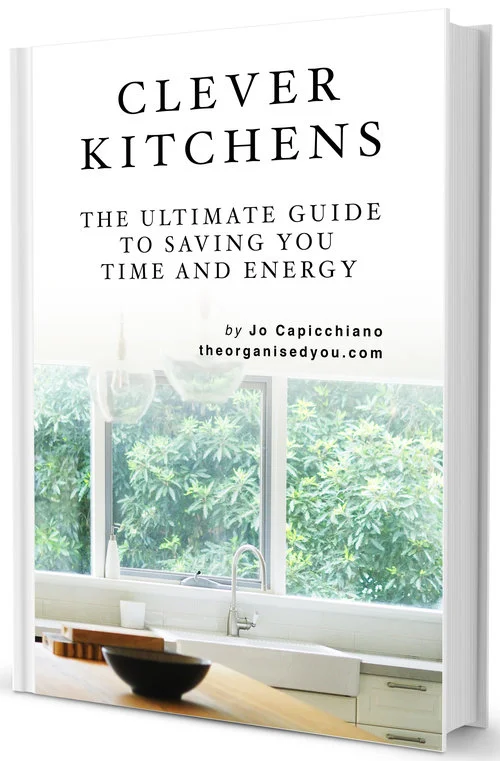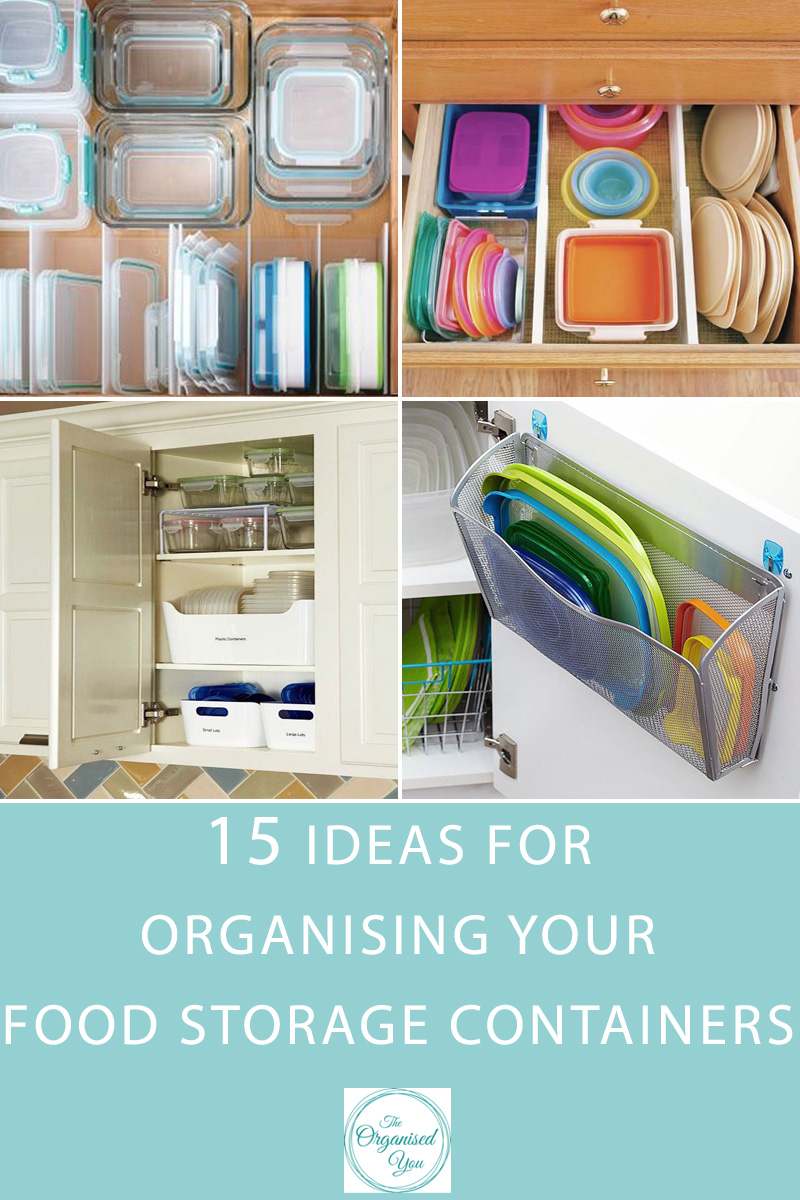Although we all know the benefits of an organised kitchen - saving you time, energy, effort, and money - it's another thing to actually set about trying to achieve it. In this post, I'm breaking down the seemingly daunting task of organising your whole kitchen by looking at each separate area in detail (pantry, fridge, freezer, cabinets and countertops). I'm giving you organising tips and strategies for each area, so you can set to work creating a space you'll truly love spending time in!
Pantry
1. Put pantry items in airtight containers to maintain freshness and encourage them to last longer
2. Divide your pantry into zones so you can find everything easily - baking, sides, snacks, canned goods, sauces, spices etc
3. Use baskets or bins to hold groups of items or extra food/double ups
4. Use a tiered shelf or turntable for cans so you can quickly and easily see what you have
5. Containers that stack on top of each other will help to utilise every last inch of shelving space
6. Having a surplus of pantry items in another storage space means you'll always be prepared and you can grab bulk items on special, saving you time and money
7. Take items out of boxes and bags, and pop them into baskets/ bins/ containers to create more storage space i.e. cereal, muesli bars, big bags of chips etc. Use the back of the pantry door for extra storage if necessary
8. Try to put things in clear containers or baskets (i.e. wire baskets) where possible so you can see what you have/need and can quickly quickly write grocery lists. This will also encourage the kids to find what they're after without always needing you to find it for them!
9. A Lazy Susan is a great way to store oils, sauces and vinegars, and makes for easy clean-up if anything spills
10. Labelling baskets and containers will ensure everything always goes back in the right spot
Fridge
11. Pull-out baskets storing similar items are easy to grab-and-go i.e. lunch items, cheese, fruit etc. Label these baskets so you can quickly find what you need
12. Store your food in 'zones' in the fridge - lunch items, condiments, vegetables, healthy snacks, leftovers. Avoid having an over-stuffed or crowded fridge, as this will lead to faster food spoilage due to the fluctuating temperatures
13. Do a quick clear out of the fridge every time you do a grocery shop, so you avoid holding onto items you no longer need/use, or running the risk of food rotting in the back. Bring older food to the front of the fridge/top of the container so it can be used first
14. Try to do a deep-clean once a month where you empty the fridge, take out the shelves, and give everything inside and out a really good clean. Having a sparkling fridge will motivate you to keep it that way!
15. Containers that stack on top of each other are a bonus because they use up the maximum amount of storage space. It's best to use clear square or rectangular containers as they take up less room than round ones
16. Store cold cuts and deli items in containers - these tend to 'sweat' in their packaging, and can sometimes leave nasty smells or mess in your fridge
17. Make sure each shelf of your fridge has a 'function' so you know where everything lives and can quickly locate what you need
18. Fridge shelf liners prevent mess spilling on your shelves and allow for easy clean-up
19. Choose a designated spot in the fridge for defrosting meat and seafood, preferably on the bottom shelf to prevent drips from contaminating food below
20. Always label the leftovers you store in the fridge with the date so you know exactly how long they've been there - washi tape, masking tape or sticky-notes are all good options
>> Get the step-by-step process for creating a more efficient and organised kitchen that will save you time and energy, in ‘Clever Kitchens’. Click the button below to learn more! <<
Freezer
21. If you like to batch cook, separate out the amount/portions you'll need for each meal, rather than freezing the entire amount in one big container
22. Freezing things flat and storing portions in ziplock bags that you can 'file' is a great space-saver
23. Taking items out of their bags, such as frozen peas, corn, broccoli etc, and putting them into containers, will prevent loose items from escaping and rolling around the bottom of the freezer
24. Step shelves are a great way to add extra freezer storage space
25. Under-the-shelf organisers are another great option in the freezer, as they add an extra layer of storage!
26. Plastic bins can hold groups of items, and because they slide in and out, everything is easy to access. Magazine holders are a good choice too because they are slim and can be used upright or on their side
27. Buying meat in bulk and portioning serves is a great time-saver, as you can just thaw out what you need when it comes to preparing dinner
28. Use the shelves in the freezer door for smaller containers of items
29. If you're storing things in ziplock or freezer bags, push as much air as possible out of the bag to maximise storage space
30. Magazine file folders stored on their side are a great option for organising the contents of a chest freezer
Cabinets and drawers
31. Do a thorough declutter of your cabinets by removing every item and honestly assessing whether you need/use each item. When did you last use that bread maker or juicing machine that is taking up precious cupboard space? If it hasn't been used in the last 12 months, donate it to someone who will benefit from it
32. Group 'like items' together within cabinets i.e. bakeware, pots and pans, storage containers, mixing bowls, crockery etc
33. Consider dedicating one cabinet solely to the kids' paraphernalia - have all their dishes, cups, bibs, cloths, cutlery, lunch boxes housed here so you all know exactly where to find everything kid-related. This also makes it easier for them to help out!
34. Make the area around your stovetop a dedicated 'cooking zone' so you can have pots and pans close at hand. Store lids separately in lid racks, either against the wall or on a smaller shelf
>> Interested in learning more about organising your kitchen? Clever Kitchens is the ultimate guide and video workshop that will show you how! Check it out here >>
35. Keep essential cooking tools on the bench top in a utensil holder so you don't have to rummage through drawers when you're in the middle of cooking.
36. Use drawer dividers in all drawers to keep everything neat and organised
37. Hang aprons, oven mitts and tea towels on pegs/hooks on the wall, or on the back of a cupboard door
38. Have your cookbooks out on display so they're not taking up precious cupboard space
39. Keep food storage containers, plastic wraps and labels near the fridge to make it easy to deal with putting the leftovers away
40. Store your plastics/glass containers with their lids separated and 'filed', and try to keep your collection of these containers to an absolute minimum
Countertops
41. If your kitchen benches look like a dumping ground, assess exactly what keeps landing here (i.e. paperwork, kids 'stuff', keys, wallets, bags). Brainstorm what systems you could set up elsewhere in order to keep the 'non-kitchen' items off the bench top
42. A family command centre will ensure that all paperwork is kept off the benches and located in one central spot
43. Give every item a proper home - 'a place for everything, and everything in its place' - to ensure there is no build-up on the kitchen counter
44. Put away appliances that you rarely use - if you only have toast once a fortnight, do you really need the toaster sitting out on the bench, or could you tuck it away in a cabinet to be pulled out when needed?
45. Assess whether having items in easy reach on your benches is really 'convenient' or actually taking up precious food prep space
46. Use a metal knife rack attached to a wall to store your knives - they will be easy to grab, safe from little fingers, and you won't be taking up precious bench space with a bulky knife block
47. Try to avoid having a 'junk drawer' - it will just end up accumulating a whole lot of rubbish that will be a nightmare to sort through. Take every item out, and if it's not kitchen-related, then it doesn't belong and will need a home elsewhere. For example, put stationary in the command centre; batteries and torch in the laundry; keys near the front door for easy access etc. A cluttered bench + an overflowing junk drawer often go hand-in-hand so aim to declutter both these spaces in one go
48. Utilise kitchen wall space or the back of the pantry door for your shopping lists, calendar and to-do lists
49. When you arrive home and unload your belongings (which can often mean dumping it on the counters!), make it your new mission to put things away in its home straight away. If you still find yourself putting your belongings on the kitchen bench, it will be because these items do not have a specified 'home', so create one elsewhere!
50. Make clearing your kitchen counters a daily habit - things will inevitably build up during the day, but a quick 10-minute clear-up at the end of each day will keep your kitchen clear and uncluttered, and is a great way to start the next day


